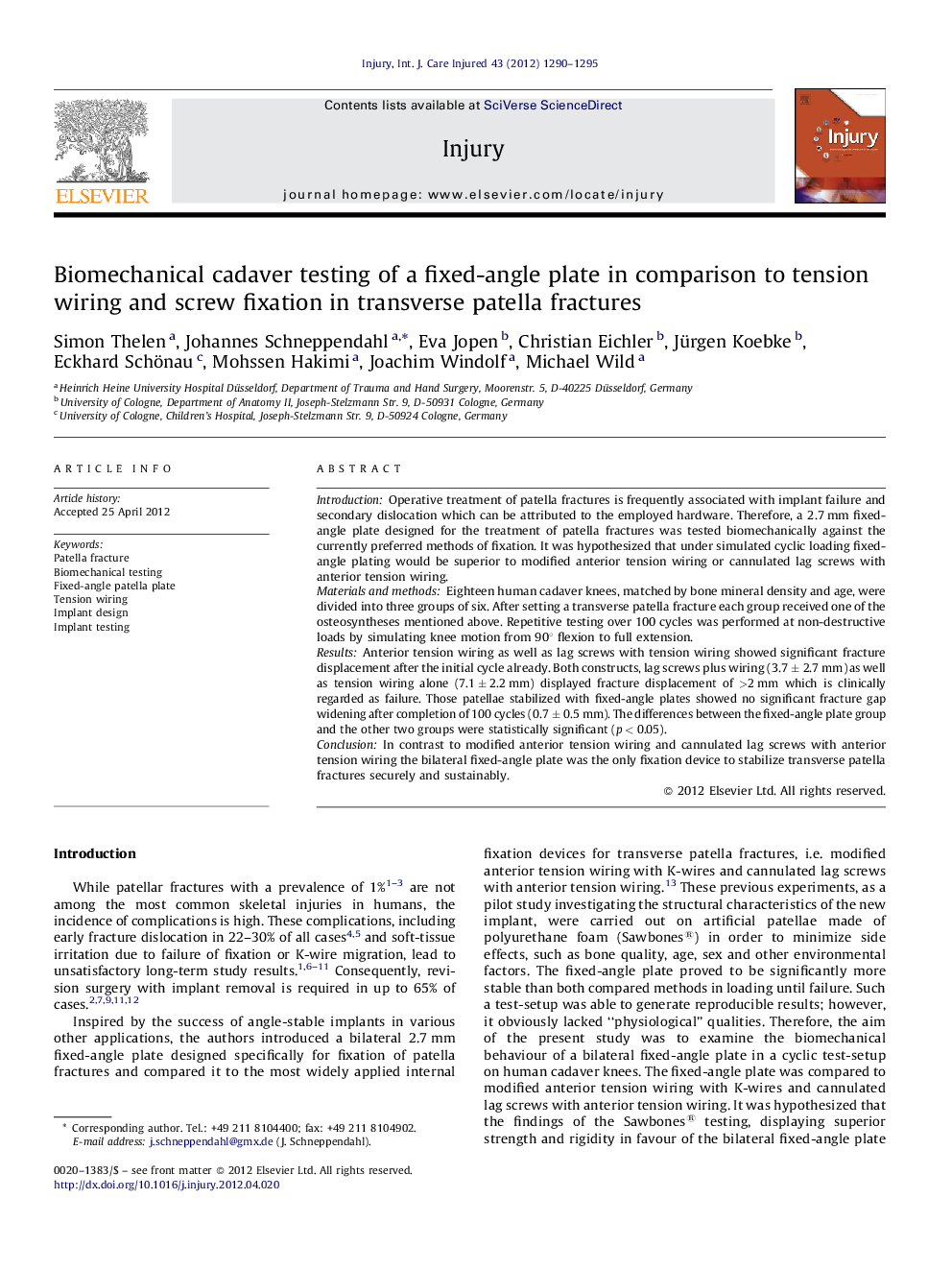| Article ID | Journal | Published Year | Pages | File Type |
|---|---|---|---|---|
| 3239570 | Injury | 2012 | 6 Pages |
IntroductionOperative treatment of patella fractures is frequently associated with implant failure and secondary dislocation which can be attributed to the employed hardware. Therefore, a 2.7 mm fixed-angle plate designed for the treatment of patella fractures was tested biomechanically against the currently preferred methods of fixation. It was hypothesized that under simulated cyclic loading fixed-angle plating would be superior to modified anterior tension wiring or cannulated lag screws with anterior tension wiring.Materials and methodsEighteen human cadaver knees, matched by bone mineral density and age, were divided into three groups of six. After setting a transverse patella fracture each group received one of the osteosyntheses mentioned above. Repetitive testing over 100 cycles was performed at non-destructive loads by simulating knee motion from 90° flexion to full extension.ResultsAnterior tension wiring as well as lag screws with tension wiring showed significant fracture displacement after the initial cycle already. Both constructs, lag screws plus wiring (3.7 ± 2.7 mm) as well as tension wiring alone (7.1 ± 2.2 mm) displayed fracture displacement of >2 mm which is clinically regarded as failure. Those patellae stabilized with fixed-angle plates showed no significant fracture gap widening after completion of 100 cycles (0.7 ± 0.5 mm). The differences between the fixed-angle plate group and the other two groups were statistically significant (p < 0.05).ConclusionIn contrast to modified anterior tension wiring and cannulated lag screws with anterior tension wiring the bilateral fixed-angle plate was the only fixation device to stabilize transverse patella fractures securely and sustainably.
